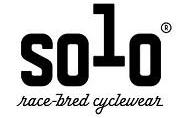Track Racing - Frequently Asked Questions
Scroll down to see moreThe Track
A velodrome is a bicycle racing track where the fastest events in cycling are held. The tracks are oval shaped with banked turns that allow spectators an incredible view of the speed and colour of the sport. Velodromes can range from less than 200 metres (with very steep banking) to over 450 metres on outdoor, concrete tracks. However Olympic-standard velodromes need to be 250 metres in length, completely covered and made of wood.The Manukau Velodrome is a 285m concrete oval with 42 degree banked turns. It was originally built in 1989, in preparation for the 1990 Auckland Commonwealth Games. In addition to the Games, the Manukau Velodrome has held several national championships.
What are the markings on the velodrome?
The apron of the track is a flat paved area, adjacent to the racing surface of the velodrome. It is used as a transition for getting on and off the track. It is also used as a safety buffer during races, giving the riders a place to exit the track if they have a mishap, such as a flat tire.The track markings from the bottom of the track..
The cote d'azur or blue band is located at the transition area between the apron and the banking. This blue area is out-of-bounds & represents the inside edge of the track for normal racing. During the timed events, sponges are placed on the blue band to help ensure that riders do not try and cut the distance by riding too low on the track.The next line up the track is black & is the line used to measure the track. Although sometimes called the pole line the racing surface actually extends (20cm) down to the blue band. This line is also called the pursuiting line because riders in this event will try to follow this line as it is the shortest distance around the track.
The next line up the track is the sprinter's line. It is a red line 90cm above the black pole line. It is used to define the sprinter's lane. The lane is the area between the black and red lines, and is used to help ensure safe sprinting on the track. There are a whole series of track racing rules dealing with the lane. Generally speaking, when a group of riders start a sprint, the first rider into the lane is given possession of the lane. No rider can try to pass underneath on the inside of this rider & any rider trying to pass on the outside has to stay out of the lane to do it. Once the lead rider is in the lane they cannot come out of the lane if someone is adjacent to them.
3m above the blue band is a blue line (at Manukau this has faded to look white) called the stayers line. This line was originally used during motor-paced races, where the riders were obliged to stay behind their motorcycles, that were called stayers. The lead stayer was obliged to drive on the stayers line. During warm-up and training events, slower riders are expected to stay above this line, leaving the lower part of the track for fast training.
Each track has four lines perpendicular to the track.
The finish line for massed start events (points race, sprints, scratch, madison, elimination etc) is on the home straight just before the first corner. In the middle of each straight is a red starting line, used for timed events. The Kilo and 500m TT, Pursuits, and team events (Team Pursuit and Team sprint) all use these lines. The fourth line is the red 200m mark that is used in the timing of sprints. This line is 200m from the finish line and is at the beginning of the back straight.
The Bikes
Track bikes are minimalist, strong and built for speed. There are no brakes, no gears and no freewheel.If the back wheel is turning, so are the pedals. Speed is controlled by pedalling and by pushing back on the moving pedals. Disc wheels are sometimes used for aerodynamic reasons even though they are heavier and far more expensive than wire spoked wheels.
Riders are firmly attached to the bikes using step-in pedal systems, or standard pedals with two sets of straps. It's vital that riders can't accidentally pull out of the pedals, and that power transfer is as efficient as possible, so riders use shoes with extremely stiff soles.
The Riders
Riders generally fall into 2 categories.Endurance racers need excellent fitness, usually expressed as a high VO2 Max measurement that indicates the rider's ability to use oxygen efficiently.
A Sprinter needs lots of fast-twitch muscle fibres and will train specifically to go like a nutter over 200-1000m.
General Rules
. Designated training squads have priority during their allocated times. If a session is in progress report to the person running the session before riding on the track
. Helmets must be worn at all times when riding
. When warming-up stay above the blue line (that has faded to look white) and leave the black free for riders putting in a faster effort
. Be responsible for your safety and the bike you are riding (everything correctly tightened,tyres in good order and correctly inflated)
. Do not cross the track when the track is in use
At Race Meetings
. Unless otherwise noted, all Cycling NZ rules apply during all races. Helmets must be worn at all times when riding (motorbikes included) and securely fastened
. The tunnel must be used to enter the track infield
. Only enter and exit the track using the entry and exit chutes
. No offensive language
. Hands on handlebars at all times
. No watches or jewellery to be worn whilst riding
. Be responsible for your safety
. Be responsible for the bike you are riding; everything is correctly tightened, tyres in good order and correctly inflated
. Always be observant and considerate of others using the track
. Ride in a straignt line in all sprints
. When warming-up stay above the blue line (leave the black free for riders putting in an effort).
. Tubular tyres must be securely glued to rims. Any rider who rolls a tubular tyre while racing at Manukau Velodrome will be fined $50. For a second offence, the rider will be fined $50 and be barred from racing at Manukau Velodrome for three weeks. In the event that a rider's tubular tyre is rolled from his or her wheel by an official at any Manukau Velodrome race meeting or training sessions, the rider shall be given a verbal warning. The rider will be excluded from the meeting until they can produce a replacement wheel which passes a safety check by the meeting officials. Should that rider's tubulars fail any subsequent safety check , the rider shall be fined $50."
Injury Policy
Any competitor who has received hospital treatment shall be required to produce a certificate of clearance before competing in further events.Any competitor who knowingly competes whilst suffering from an injury or medical condition which may impair control of his/her bicycle is liable to exclusion, suspension or disqualification unless a medical certificate, issued by a Doctor qualified in the medical field in which the injury or medical condition falls, certifying that the rider is fit to compete in track cycling, is produced.
Any competitor receiving an injury that requires treatment from a Doctor, Medical Centre or Hospital must produce a medical clearance certificate before competing in that or any subsequent events.
Where a concussion has occurred, an automatic stand down period of 21 days shall apply. Where a competitor has three concussions in one season or when a competitors drivers licence is suspended by LTSA due to head injury, the rider is required to obtain a clearance from a neuro-surgeon or similar medical specialist.
Scratchings
Any riders who scratches from a Final event for which they have previously qualified through heats, should be disqualified from the rest of the meeting, and the subsequent meeting, unless they have a valid reason for doing so.The Events
Track racing offers a wide variety of events.Races are classified as a mass start event or a time trial event.
The following descriptions of popular events should make watching the races more enjoyable for you.
Time Trials
These are races against the clock. Riders are alone on the track with no one to provide a draft in front of them. For this reason aerodynamics become very important and the use of disc wheels and time trial handlebars is common.Time trials (TT's) are standard events at Centre, National and World Championships and the Olympics.
The Kilometre TT or 'Kilo' is three and a half laps (at the Manukau velodrome) and is considered by many to be the most painful event in track racing. From a held start, the rider will sprint at full effort for a little over a minute. By the start of the third lap the rider is feeling the pain of lactic acid in his legs as his body has reached its limit. A good Kilo rider will force his body to keep up the speed till the end.
The 500 metre TT is riden by Under17s Women and the older of the Men.
The Pursuit is a time trial where two riders start on opposite sides of the track and try to catch each other as they race around the track. Senior Women typically race 3 km and Senior Men 4 km. The Individual Pursuit was an Olympic event for both men and women. A variation is the Team Pursuit where teams of four riders chase each other around the track. Team Pursuit is an exciting Olympic event involving practice and precision teamwork.
There is a team event for the sprinters called the Team Sprint where 3 riders start, the first rider pulling off after 1 lap, the second rider after 2 laps & the third rider finishing -an exciting & often close event.
200m time trials are essentially a sprint with one rider at a time and are used for seeding a match sprint competition. The riders get two laps to accelerate at the top of the track before diving down the banking to the 200m mark. This flying 200 is timed from the 200m mark to the finish line.



